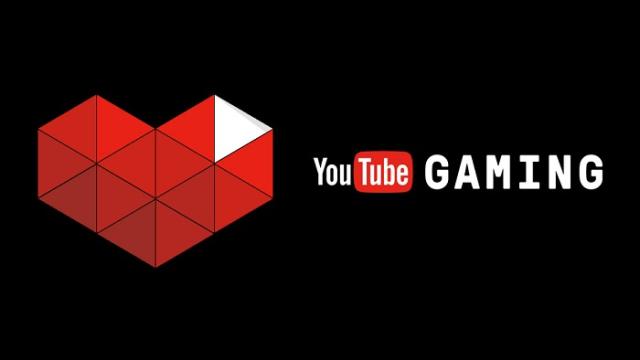YouTube is making another big push into the world of video games with the launch of YouTube Gaming today, but the complicated world of Content ID and copyright claims may prove an enormous hurdle.
My eyebrows raised when I saw this tweet earlier today:
https://twitter.com/FlamingClaw/status/636482154365644800
(If you’ve fallen victim to this due to abuse or false positives, please let me know.)
Content ID is YouTube’s controversial technology that automatically scans videos for copyrighted content. If you upload a clip with a piece of music that’s owned by someone, Content ID might flag the video. (When this happens to me, it’s usually moments after the video is uploaded, and before it can appear on the site.) You can still publish the video, but you might have to split ad revenue with the copyright holder or, in some cases, forgo having ads entirely.
This is different, however, than a company or individual making a specific copyright claim. Copyright claims are what got critic Jim Sterling’s takedown of a bad video game temporarily removed from the service, and it’s what Konami tried using against a Super Bunnyhop video with alleged information regarding the relationship with Metal Gear designer Hideo Kojima.
Content ID and copyright claims apply to YouTube livestreams, too. Per YouTube’s guidelines:
Content ID scans all live streams and Hangouts on Air for third-party content. When Content ID identifies third-party content, a placeholder image may replace your live broadcast until Content ID no longer detects third-party content. In some cases, it may terminate your live broadcast. Live streams and Hangouts on Air can also be terminated if they receive a copyright strike or a Community Guidelines strike.
Keep reading, as it it gets even weirder:
Please understand that a Content ID claim may interrupt your live broadcast even if you licensed the third-party content in question, or even if you restricted your broadcast to a territory in which you own all the necessary rights. If a third party has claimed the content in your video through Content ID, you may ask the content owner to whitelist your channel to facilitate future live streams and Hangouts on Air.
YouTube is admitting (anticipating?) the system may very well screw up, and “oops, sorry” seems to be the extent of their pre-emptive apology.
I wonder what’s going to happen with Nintendo games, given their approach to YouTube?
These are ripe for abuse and false positives.
@FlamingClaw @NTom64 I heard a stream got cut because they sang happy birthday to a dude.
— AR| Purple (@CruelBoyPurple) August 26, 2015
(I haven’t personally verified this specific, but it’s not hard to imagine.)
With the former, we need only look to towards Sterling and Konami’s cases as clear evidence of how YouTube’s deference to copyright holders can harm content creators. (They aren’t alone, either. TotalBiscuit’s incident even has a Wikipedia entry.) It seems to be a case of when, not if.
If you get a copyright strike, it that means your video has been taken down from YouTube because a copyright owner sent us a complete legal request asking us to do so. When a copyright owner formally notifies us that you don’t have their permission to post their content on the site, we’re required by law to take down your upload.
In some ways, the false positives are even scarier. If you choose to dispute a Content ID claim, there can be disastrous consequences for your channel, if YouTube doesn’t rule in your favour. Bigger YouTube channels have a leg up over your average creator, as they’re often associated with channel networks who handle this for them, thanks to a close relationship with YouTube.
Losing a Content ID dispute means YouTube applies a strike against your account. Three strikes means your account is deleted, and your subscribers vanish. A single strike will disappear from your account after six months of good behaviour and completing YouTube’s Copyright School.

Twitch doesn’t ignore copyright, of course. The service found itself in hot water when it decided to introduce a similar service for archived streams, aka videos on demand. Twitch’s approach would scan videos for copyrighted content once the livestream was silence 30-minute chucks with infringing audio. This lead to some humorous scenarios where Twitch was accidentally muting the in-game music from various video games, since it couldn’t tell the difference.
For the most part, this seems to have been a temporarily blip for the Twitch community.
Here’s how Twitch put it when it was announced in August 2014:
We’ve partnered with Audible Magic, which works closely with the recorded music industry, to scan past and future VODs for music owned or controlled by clients of Audible Magic. This includes in-game and ambient music. When music in the Audible Magic database is detected (“Flagged Content”), the affected portion of the VOD will be muted and volume controls for that VOD will be turned off. Additionally, past broadcasts and highlights with Flagged Content are exportable but will remain muted.
There was a key difference with Twitch’s approach, though, which the company put in bold:
Audio Recognition will only be run against audio in VODs. We are not scanning live broadcasts and there is no automated takedown of live content.
It’s totally possible Twitch will reverse course on this, and YouTube’s decision may give them a perfect opening to make copyright owners a little bit happier. Alternatively, this becomes an important reason for Twitch streamers to stay with the service they’re already happy with, and provides newcomers an important point to consider when streaming for the first time.

Comments
12 responses to “YouTube’s Approach To Copyright Claims Could Scare Off Streamers”
Twitch will kill this!
Just remember. Google tried to go up against FB with G+ but lost. Too little, too late Google 🙂
I dont use G+ and don’t think anyone i know does..
but Facebook is becoming more and more annoying/shit. Newsfeed is filled with rubbish spam and clickbait – your friends don’t even need to like/share something even more for it to appear on your feed.
And at the sametime, google+ is being integrated into more and more things. I wouldn’t say it’s over yet.
I’d welcome google+ over facebook if it actually goes back to how things used to be on facebook (doubtful though)
I know quite a few people who do, though most use it professionally to keep in touch with workmates and colleagues etc.
I’m actually wondering why the crap there are people on my friends list on my FB account (granted at least I KNEW those people).. but did FB introduce some auto invite/accept thing whilst I wasn’t paying attention?
I only have an FB account because some websites/forums I visit require one (+keeping tabs on some company FB pages which will only let u view them if u have FB) so it’s barren and unused unless i have to enter an FB accoun..
I’ve literally seen this happen, watching a Star Citizen stream a year or so ago. They started singing Happy Birthday, the stream cut out, and they later confirmed that was what brought the stream down. They even cut that portion out of the later uploaded copy of the broadcast.
And the UI scares off viewers.
I would say that now YouTube has shown that it’s possible to apply this to live streams Twitch will be forced to. Remember, YouTube aren’t doing this because they’re douche bags they’re doing this to defend themselves. If a copyright holder comes up to them and claims YouTube is broadcasting something they don’t own the rights to YouTube can’t just shrug and say ‘well, it’s too messy to prevent people from uploading that content so we don’t bother trying’. They’ve got a million people uploading and streaming content that from a legal perspective YouTube is at least partially responsible for. It sucks but there’s no way around it.
So how is it that a content creator can get their videos pulled for having snippets of a song or a game, but there are endless mirrors of tons of albums out there that are perfectly fine?
YouTube offers copyright holders more options than simple takedowns with ContentID. They can also opt to leave the video online but place ads on the video to earn them money. It’s not uncommon to see that on music videos uploaded by random people.
It’s not so much the presence of the material that’s being policed as much as people making money from it through ads.
The way YouTube handles copyright claims is BS anyway. “Guilty until proven innocent” is Medieval system of judgement. Literally, Medieval. That’s the last time it was widely used. The fucking 1600s
This tweet is the easiest way to sum up how dodgy the YouTube policy is:
“Just today Starz decided that my Manborg review was theirs and the bit they chose to claim? It included my voiceover and to-camera.”